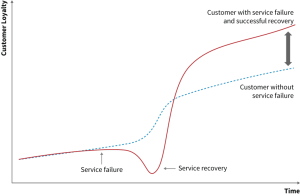

Share on social..
Understanding your customers is key to delivering a service they will remember. So when it comes to collecting feedback, do you only want to know how great you are? And is that a good idea? What are you going to do with that 99% CSAT score? If the answer is to use it to market yourself, you have missed the real purpose of feedback – it is not there to pander to your ego, it is there to improve the service your customers pay for!
“Unhappy customers are your greatest source of learning” – Bill Gates
Collecting feedback should be about improving the service you deliver to your customers. But if you only collect approval, how can you improve your service? It is terrific when you get glowing comments and have people say how great you are, but what about your clients that are unhappy, why don’t you seek them out?
Seeking negative feedback seems like a foolish approach to a CSAT score, but if you stop worrying about the score and concentrate on finding ways to improve your service, negative feedback is actually the most important.
“We have been brought up with the belief that negative feedback is wrong” – Seth Godin
Negative feedback is welcome because it points you towards what you are doing wrong not what you are doing right. Think about why a service desk exists – is it for people to tell you that their computer is working OK? No! It is to fix what is broken so you can improve their service. So do the same for your feedback – if you find out what is wrong, you can do something to fix it.
It is not just a question of collecting feedback – positive as well as negative. But once you have it, what do you do with it?
For each type of feedback, you need to assign an owner. That owner must be able to take positive action without approval. They need to be empowered to go above and beyond in order to resolve any issues. Teach those responsible about the ‘service recovery paradox’, which is that you can, with the correctly empowered team, turn an unhappy customer into a raving fan.

When we say ‘above and beyond’, we are talking about someone’s total commitment to resolving the issue present. This means you will need resources, knowledge and, most of all, time – to correctly empower your team you must allow them to put their day job to one side and spend time recovering the customer.
Once you have done everything in your power to recover from the bad feedback and have resolved the issue, you need to ask for feedback again. If the feedback has not improved, you have not gone above and beyond.
“Raving fans are your greatest salespeople” – Ken Blanchard
Feedback is the voice of your customer; they need to know they are heard and to believe you care. By seeking negative feedback, you are demonstrating that you are listening and that you do care, especially if you then act upon that feedback. You can then take steps to recover a bad opinion and turn an unhappy customer into a raving fan.
In our next blog, we will explain how we collect and act upon our own feedback.